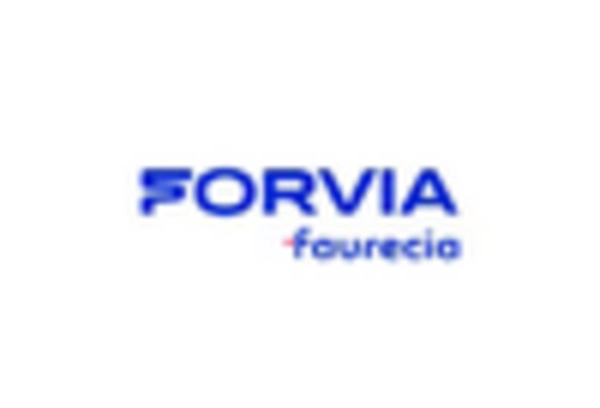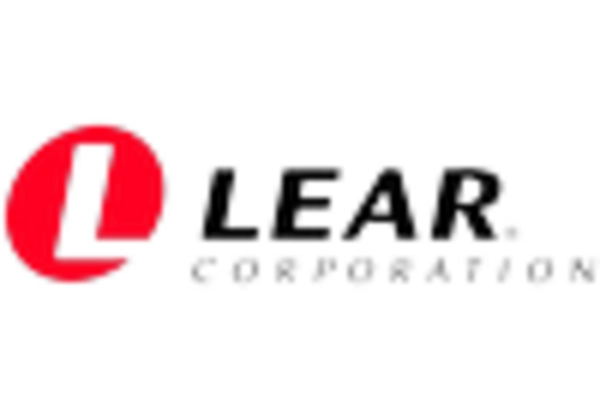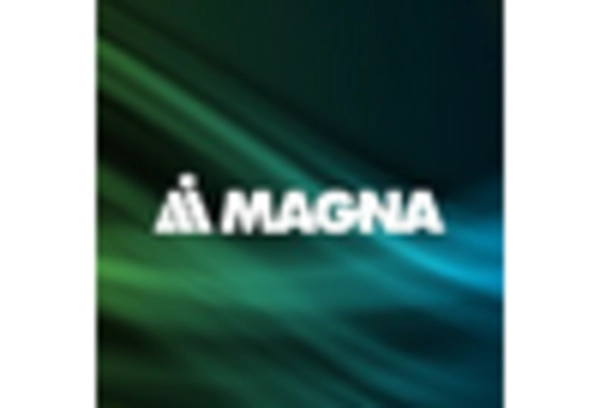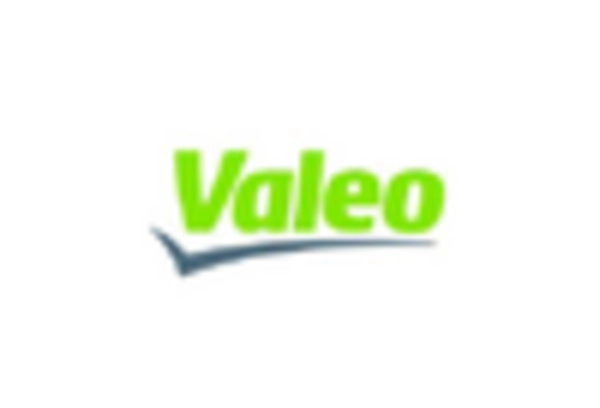Increasing Vehicle Production Rates
The automotive fascia market experiences growth driven by rising vehicle production rates in the US. As manufacturers ramp up production to meet consumer demand, the need for high-quality fascias becomes paramount. In 2025, the US automotive industry is projected to produce approximately 12 million vehicles, indicating a robust demand for components like fascias. This surge in production not only supports the automotive fascia market but also encourages innovation in design and materials. Manufacturers are likely to invest in advanced technologies to enhance the aesthetic and functional aspects of fascias, thereby contributing to market expansion. The automotive fascia market is thus positioned to benefit from this upward trend in vehicle production, as it correlates directly with the demand for exterior components.
Consumer Preferences for Aesthetic Appeal
Consumer preferences for aesthetic appeal are a driving force in the automotive fascia market. As buyers increasingly prioritize the visual aspects of their vehicles, manufacturers are compelled to innovate and enhance the design of fascias. In 2025, it is anticipated that 40% of consumers will consider exterior design as a key factor in their purchasing decisions. This trend encourages manufacturers to collaborate with designers and utilize advanced materials that offer both functionality and visual appeal. The automotive fascia market is thus likely to experience growth as companies adapt to these changing consumer preferences, leading to a wider variety of styles and finishes in fascias.
Regulatory Compliance and Safety Standards
The automotive fascia market is significantly influenced by stringent regulatory compliance and safety standards in the US. As safety regulations evolve, manufacturers are compelled to enhance the structural integrity and performance of fascias. The National Highway Traffic Safety Administration (NHTSA) has established guidelines that necessitate the use of durable materials and designs that can withstand impact. This regulatory landscape drives innovation within the automotive fascia market, as companies strive to meet or exceed these standards. The financial implications are notable, with investments in research and development expected to rise, potentially reaching $1 billion by 2026. Consequently, adherence to safety regulations not only ensures consumer protection but also propels the market forward.
Technological Advancements in Manufacturing
Technological advancements in manufacturing processes are reshaping the automotive fascia market. Innovations such as 3D printing and automated assembly lines are streamlining production, reducing costs, and enhancing precision. In 2025, it is estimated that 30% of automotive components will be produced using advanced manufacturing techniques, which could lead to a significant reduction in lead times and waste. This shift allows manufacturers to respond more swiftly to market demands and customize fascias according to consumer preferences. The automotive fascia market stands to gain from these advancements, as they not only improve efficiency but also foster creativity in design, enabling the production of unique and appealing fascias.
Sustainability Initiatives in Automotive Design
Sustainability initiatives are increasingly influencing the automotive fascia market, as manufacturers seek to reduce their environmental footprint. The push for eco-friendly materials and processes is becoming a priority, with many companies committing to using recycled or bio-based materials in their fascias. In 2025, it is projected that the use of sustainable materials in automotive components could reach 25%, reflecting a growing trend towards environmentally responsible manufacturing. This shift not only aligns with consumer preferences for greener products but also enhances the brand image of manufacturers. The automotive fascia market is thus likely to see a rise in demand for sustainable options, as both consumers and regulatory bodies advocate for more responsible practices.

















Leave a Comment